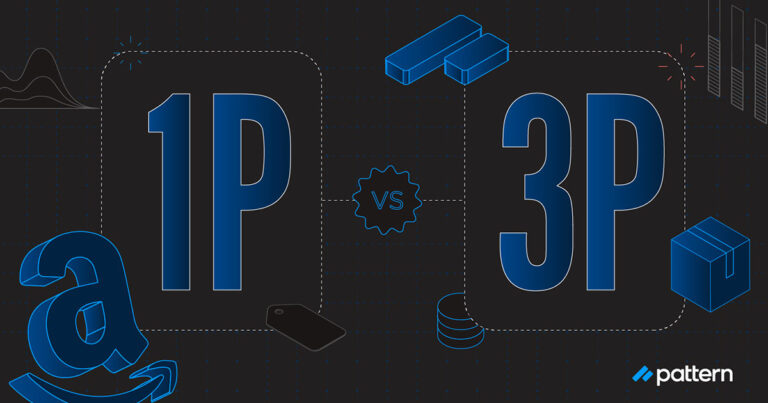If businesses weren’t at least dipping their toes in the world of ecommerce pre-2020, COVID-19 has proven they are dangerously behind the times. Offline the effects of the pandemic have been devastating for many brands. Business Insider reported in August 2020 that more than 6,300 brick and mortar stores will be closing in 2020, including Pier 1 Imports (450 stores), Walgreens (200 stores), and Tailored Brands (500 stores). Brick and mortar retailers across the country are facing bankruptcy and financial uncertainty.
Online, however, there’s a different story being told.
Propelled by massive shifts in consumer behavior due to shelter-in-place and social distancing measures, ecommerce has jetpacked itself into the future, and not just by a few years, but by a decade! McKinsey reports that ecommerce market penetration jumped forward by ten years in the first quarter alone, leaving many brands to quite literally adapt or die.
These changes have revolutionized the market, and they’re also begging the question: where do we go from here? A look at the numbers can give us an idea of the ways COVID-19 is changing the future of ecommerce and if those changes will be sustainable.
How the market has changed during COVID-19
Limited by shelter-in-place orders, shoppers are purchasing products on digital and omnichannel markets in unprecedented numbers—a study by Adobe Analytics found that online spending hit $434.5 billion in July, and 2020’s online sales are expected to surpass the total online sales in 2019 by the start of October. Consumer behaviors have shifted to meet the demands of a crisis economy, and as a result, brands are shifting more attention to the digital space to meet increasing demand for online products.
Consumer behavior changes
According to a study by McKinsey, consumers across the globe have shifted their focus to essential products, like grocery and household supplies, and products with value. Many are battening down the hatches for impending financial uncertainty, so much of the shift has turned away from high-priced and luxury items. It isn’t just durable products like shoes or headphones that consumers are buying, but consumable products (products like sanitizer that you buy more than once) as well.
Something that has noticeably changed due to the COVID-19 crisis is consumer purchasing behavior among 55-74 year olds, or the baby boomer generation, who’ve been most affected by the pandemic. According to the National Retail Federation, baby boomers typically made less than half of their purchases online pre-pandemic. Two thirds now say their shopping experience has been improved by online technology, in-store, and curbside pickup. Baby boomers have also embraced delivery services. Six out of ten baby boomers say they are using services like Amazon Prime or Shipt more often because of COVID-19.
Ecommerce brand growth
Ecommerce brands have seen leaps in traffic and growth across the board during the COVID-19 crisis. According to McKinsey, most categories have seen more than 10 percent growth in their online customer base during the pandemic, and it’s translated into sales in big ways.
In July, Amazon posted second quarter earnings of $88.9 billion, blowing away its expected $81.24 billion. Walmart Marketplace has doubled its pool of sellers to over 50,000 since July 2019, and eBay reported a 26% GMV growth in its second quarter, it’s highest quarterly growth rate in 15 years.
Dotcom sites are also taking a lot of search traffic from sites like Amazon, with websites like Lowe’s, Home Depot, Macy’s, and others seeing big spikes in traffic share. Walmart, Instacart, and Target.com have won many new customers with their online grocery services, and Walmart’s much-anticipated Walmart+ could give unprecedented competition to Amazon’s Prime services in the near future.
According to a study by the Cleveland Research Company, brands expect Amazon to account for 64% of their digital business in 2021 versus 83% in 2019, showing diversification to omnichannel markets is also on the rise. According to CRC, general merchandise categories expect to see a similar concentration with Amazon in 2021, with around 65% of their digital sales flowing through the platform.
CRC found that the COVID-19 crisis has led to an enormous mix shift towards digital commerce (these findings amount to four plus years of mix shift compared to where the market was in the U.S. pre-pandemic). In April, manufacturers expected ecommerce to reach 21% of their U.S. retail sales in 2121. That number is up from 15% in 2019.
Market obstacles
The growth digital channels have seen is exciting, and it indicates that the future is very much now when it comes to ecommerce shopping, but not everyone is optimistic that this unprecedented growth will stick around for digital channels. One case study is the home furnishings retailer Wayfair.
Wayfair is a COVID-19 crisis success story in many ways: they saw their number of shoppers skyrocket during the second quarter. Wayfair revenue jumped nearly 84%, their number of delivered orders went up 106.2%, and they saw five million new customers on their site. Wayfair’s stock has more than tripled (it’s up 246%) this year to date, and Wayfair executives are confident that this trajectory is continuing upward and that new customers will continue to spend money on the site long after the pandemic ends.
Neil Sanders, managing director of GlobalData Retail, is skeptical that Wayfair’s numbers are sustainable. He attributes much of Wayfair’s online sales boom to the fact that many stores were closed during the pandemic, a reality that could slow post-pandemic online growth for thousands other brands that have seen unprecedented success online.
In an interview with MarketWatch, Saunders said, “From our data, consumers have already started to return to physical stores and online penetration levels in furniture and home furnishings have dropped from their peak in April. While we believe online sales will remain elevated in home related categories . . . the trends of this quarter will not be repeated indefinitely.”
Adobe found similar data. While online sales increased 55% year over year in July, Adobe found online sales have begun tapering off in the summer months with the reopening of many brick and mortar stores.
Saunders said that in addition to a recent drop in the number of online sales, competition is also a concern for businesses like Wayfair, especially now that so many other retailers are in the online space and loyalty shock at the start of the pandemic pushed many consumers to new retailers.
“A lot of retailers are now investing more in digital and this inevitably means that online competition in home will rise over the next few years,” Saunders said. “This will place even more pressure on Wayfair to maintain market share which possibly means higher spending on advertising and customer acquisition: the very thing that it can’t afford.”
So what does it all mean?
Ecommerce brands are excited about the success they’ve found online during the pandemic, but there’s also concern from market experts that any gains will be tempered when brick and mortar locations reopen. Regardless, consumer behavior shows that many of the changes made during COVID-19 may be here to stay.
McKinsey estimates over 60% of global consumers have changed their shopping behavior, and of the respondents surveyed in the U.S. and U.K., 73-80% intend to continue their adopted behavior.

Brands across the country are re-evaluating personnel, technologies, and capabilities investments to support their businesses when they emerge out of the pandemic. Having a digital presence and an omnichannel presence matters more than ever, especially in times of crisis.
While much of the future of ecommerce is uncertain, shoppers are proving to be more online than ever.





